GENERAL DATA
Plant Parts: Leaf, resin
Cultivation Mode: Wild collection/Cultivated
In Manufacturing: Pharmaceutical, perfumery, fragrance, extract, incense, herbal tea.
🌿 Industries That Use Ivy Resin (Hedera helix L.)
Ivy resin is a natural exudate sometimes obtained from cuts or incisions in the stem or bark of the Hedera helix plant. Although not commonly commercialized in large quantities like other resins, it holds niche importance in traditional medicine, skincare, and herbal formulations due to its unique phytochemical profile, especially saponins (hederacoside C), flavonoids, and polyacetylenes.
1. Pharmaceutical & Traditional Medicine Industry
Ivy resin and extracts from Hedera helix have long been used in European phytotherapy and traditional herbal medicine for respiratory and anti-inflammatory conditions.
Applications include:
-
Expectorant & Mucolytic: Helps to loosen phlegm in bronchitis and cough.
-
Anti-inflammatory: Applied topically for arthritis, rheumatism, and skin inflammation.
-
Venotonic effects: Used in remedies supporting blood circulation and vein health.
✅ Common forms: syrups, lozenges, tinctures, salves, and poultices
2. Cosmetic & Personal Care Industry
Ivy resin and leaf extracts are used in cosmetic formulations for their skin-firming, anti-cellulite, and anti-inflammatory actions.
Common products include:
-
Body contour creams and slimming gels
-
Herbal cleansers and anti-redness masks
-
Topical herbal wraps (for aesthetic skin therapy)
✅ Ivy’s triterpenoid saponins may help stimulate microcirculation and reduce puffiness
3. Nutraceuticals & Herbal Supplement Industry
While the resin itself is less frequently consumed orally, standardized extracts from Hedera helix (including resinous fractions) are included in respiratory support products.
Inclusions:
-
Herbal capsules and syrups for bronchial health
-
Throat sprays with ivy resin extract
✅ Often paired with Marshmallow root, Thyme, or Mullein in traditional blends
4. Aromatherapy & Botanical Craft Industry
Though not a prominent essential oil source, ivy resin is sometimes used in:
-
Botanical incense blends (dry resinous ivy material)
-
Herbal sachets and symbolic plant bundles in folk practices
✅ Occasionally used for protection, purification, or old European folk rites
5. Folk & Ethnobotanical Use
In some regions, ivy resin or decoctions of the resin-laden bark were used as:
-
Topical applications for skin infections or ulcers
-
Symbolic plant in seasonal or spiritual rituals
-
Anti-wart or anti-fungal wash
🌱 Key Features of Ivy Resin:
-
Contains hederacoside C, a potent saponin with proven respiratory benefits
-
Also contains flavonoids, polyacetylenes, and resinous compounds with anti-inflammatory action
-
May cause skin sensitivity or irritation in some individuals – use with caution
🧪 Note on Safety:
-
Ivy resin is not commonly ingested in raw form; commercial preparations are usually standardized and processed
-
Topical use should be patch-tested to avoid dermatitis
-
Should be avoided during pregnancy or by individuals with latex allergies
🌿 Industries That Use Ivy Resin (Hedera colchica (K.Koch) K.Koch)
Hedera colchica, or Caucasian Ivy, is a robust evergreen vine native to the Caucasus region and parts of Iran and Turkey. Though less commercially exploited than Hedera helix, it produces a resinous exudate with similar phytochemical properties and is valued in herbal medicine, cosmetics, and ethnobotany.
1. Pharmaceutical & Herbal Medicine Industry
The resin from Hedera colchica, when available, exhibits anti-inflammatory, expectorant, and wound-healing properties, owing to its rich content of triterpenoid saponins, including hederacoside-like compounds.
Applications include:
-
Bronchial herbal preparations: Similar to Hedera helix, used for cough and mucus relief
-
Topical salves for arthritis, muscle pain, and skin inflammations
-
Folk remedies for minor wounds, swelling, and dermatitis
✅ Often used interchangeably with Hedera helix in local herbal traditions
2. Cosmetic & Personal Care Industry
Ivy resin and leaf extracts from Hedera colchica are sometimes included in natural cosmetic formulations for their:
-
Skin toning and microcirculation boosting effects
-
Anti-cellulite creams and body wraps
-
Herbal detox creams and pore-tightening facial masks
✅ Suitable for use in emulsions, tinctures, and infused oils
3. Aromatherapy & Botanical Craft Use
Although not widely used in aromatherapy, dried resinous material from Hedera colchica may be found in:
-
Botanical incense or herbal fumigation bundles
-
Seasonal plant bundles in Georgian, Armenian, and Iranian traditional rituals
✅ Symbolically associated with resilience and protection in folklore
4. Traditional & Ethnobotanical Practices
In the Caucasus and northern Iran, Hedera colchica has long been respected as a folk medicinal plant:
-
Bark or resin applied topically for dermatitis and chronic wounds
-
Sometimes used as a base resin in herbal plasters for muscle pain
-
Believed to ward off negative energies and promote longevity
🌱 Key Features of Hedera colchica Resin:
-
Contains saponins and flavonoids similar to Hedera helix
-
Shows anti-inflammatory and mild analgesic properties
-
Resin is less documented in modern pharmacopoeias but widely respected in folk use
⚠️ Safety & Handling Notes:
-
Avoid raw ingestion of the resin; it may cause gastric irritation or toxicity
-
Handle with gloves; topical sensitivity or contact dermatitis is possible
-
Not recommended during pregnancy or for young children
🧪 Comparison: Ivy Resins – Hedera helix vs Hedera colchica
| Feature / Property | Hedera helix L. (Common Ivy) | Hedera colchica (K.Koch) K.Koch (Caucasian Ivy) |
|---|---|---|
| Common Regions | Europe, Western Asia, Iran | Caucasus, Northern Iran, Turkey |
| Plant Description | Smaller leaves, more common in herbal medicine | Larger leathery leaves, less studied commercially |
| Resin Source | Extracted from aerial parts and stem fissures | Less resinous; when present, from stems and bark |
| Main Compounds | Hederacoside C, α-hederin (saponins), flavonoids | Similar saponins and polyphenols; less studied in detail |
| Pharmaceutical Uses | Expectorant, anti-inflammatory, antispasmodic | Similar effects; used in local medicine as substitute |
| Topical Applications | Arthritis balms, cough plasters, wound ointments | Used in folk medicine for skin irritation and bruises |
| Cosmetic Uses | Anti-cellulite creams, toning gels, scalp care | Used in body wraps and regional detox masks |
| Aromatherapy/Fumigation | Mild aromatic use in herbal bundles | Used in Caucasus rituals and plant bundles |
| Traditional Use | European folk medicine; standard in modern herbalism | Caucasian and Iranian ethnomedicine; less global exposure |
| Toxicity/Safety | May cause skin irritation or GI upset; not for ingestion | Same precautions apply; lower data availability |
| Commercial Availability | Widely available in extracts and finished formulations | Rare in commercial markets; mostly local or wild-harvested |
🧾 Summary
-
Hedera helix is the standard medicinal ivy, well-documented, with widespread industrial applications.
-
Hedera colchica is ethnobotanically valuable, with similar chemistry but less global research and commercialization.
-
Both are toxic internally in crude form and should be used only in processed/extracted forms under expert supervision.
🍃 Industries That Use Ivy Leaves (Hedera helix L.)
Ivy leaves, primarily from Hedera helix (Common Ivy), have been a staple in traditional herbal medicine for centuries. Their rich content of saponins, particularly hederacoside C and α-hederin, makes them valuable in respiratory, cosmetic, and topical applications.
1. Pharmaceutical & Phytomedicine Industry
Ivy leaf extract is officially recognized in many pharmacopeias for its effectiveness in treating respiratory conditions.
Applications:
-
Expectorant syrups for bronchitis, wet cough, and asthma
-
Anti-inflammatory and antispasmodic herbal formulations
-
Included in licensed over-the-counter (OTC) cough medicines in Europe
✅ Form: Liquid extracts, syrups, tablets, and lozenges
2. Herbal & Nutraceutical Industry
Often featured in natural cough remedies and immune-support formulations.
Uses include:
-
Syrups and lozenges for cold and flu symptoms
-
Combined with Thyme, Licorice, or Primrose in respiratory herbal blends
-
Included in herbal teas for respiratory support
✅ Frequently used in alcohol-free formulations for children
3. Cosmetic & Personal Care Industry
Due to their anti-cellulite, astringent, and toning properties, ivy leaves are incorporated into:
-
Slimming gels and body firming lotions
-
Scalp tonics for dandruff and hair fall
-
Natural astringents in facial masks and serums
✅ Ivy extract is considered bioactive and is often combined with Green Tea, caffeine, or grape seed extract
4. Topical & Dermatological Applications
In folk medicine and some modern formulations, ivy leaf preparations are applied externally for:
-
Joint pain and muscle stiffness
-
Wound healing and minor skin irritations
-
As part of poultices or compresses for bruises or swelling
✅ Often found in herbal plasters and balms
5. Aromatherapy & Wellness
Although ivy itself is not highly aromatic, its herbal profile and historical use make it valuable in:
-
Herbal steam baths and wellness teas
-
Included in ritual bundles in traditional European wellness practices
✅ Often combined with eucalyptus, mint, and pine
6. Ethnobotany & Traditional Medicine
In European and Iranian traditions, ivy leaves are used for their:
-
Lung-cleansing properties
-
Detoxifying effects in folk formulas
-
Believed to improve blood circulation when applied topically
✅ Featured in wildcrafted folk remedies
✅ Summary of Key Applications
| Industry | Common Uses |
|---|---|
| Pharmaceutical & Phytomedicine | Expectorant syrups, bronchial relief formulas |
| Herbal & Nutraceutical | Cold remedies, children’s cough syrups, immune teas |
| Cosmetic & Personal Care | Anti-cellulite gels, skin tonics, scalp care |
| Topical & Dermatological | Herbal balms, poultices for joint pain, skin irritations |
| Aromatherapy & Wellness | Steam baths, herbal bundles, detox teas |
| Ethnobotany & Traditional Use | Folk detox formulas, topical compresses, lung support |
🌿 Industries That Use Ivy Stems (Hedera helix L.)
While ivy stems are not as commercially prominent as the leaves or resin, they contain bioactive compounds such as triterpenoid saponins and phenolic acids, making them of interest in several industries—particularly when whole aerial parts are used in extract production.
1. Pharmaceutical & Herbal Medicine Industry
Although ivy leaves are preferred for respiratory treatments, the stems are sometimes included in whole-plant extracts, contributing additional saponins and flavonoids.
Applications:
-
In whole aerial part extracts for expectorant and anti-inflammatory action
-
Supplementary botanical material in cough syrups and drops
-
Sometimes used in homeopathy for respiratory or rheumatic complaints
✅ Utilized when leaf-only extracts are not strictly required
2. Natural Dye & Tannin Industry
Ivy stems, along with leaves and bark, are rich in tannins.
Uses include:
-
Mordants in traditional textile dyeing
-
In natural ink and leather tanning practices
-
As an eco-friendly dye source in craft industries
✅ Often processed with iron salts to produce gray or black tones
3. Cosmetic & Personal Care Industry
In holistic cosmetic formulations, ivy stems can appear in macerated oils or hydrosol distillates where the whole plant is used.
Applications:
-
As part of firming lotions or body wraps
-
Occasionally in hair rinses for scalp stimulation
✅ Offers mild astringency and circulation-enhancing effects
4. Artisanal & Craft Use
Because of their flexibility when fresh and strength when dried, ivy stems are sometimes used in:
-
Natural wreath-making and decorative crafts
-
Traditional basketry and binding agents in herbal packaging
-
As supporting structures in dried herbal displays
✅ Valued in folk art and eco-friendly decor
5. Ethnobotanical & Historical Uses
Historically, ivy stems were sometimes:
-
Used in binding wound poultices
-
Employed as part of smudging bundles with other herbs
-
Applied in ritual decoctions in parts of Europe and the Middle East
✅ Seen as a protective botanical in some traditions
✅ Summary of Key Applications
| Industry | Common Uses |
|---|---|
| Pharmaceutical & Herbal | Support in aerial-part extracts for respiratory health |
| Natural Dye & Tannins | Mordants, textile dyes, leather tanning |
| Cosmetic & Personal Care | Body tonics, hydrosol ingredients, scalp care |
| Artisanal & Craft | Wreath-making, dried herb structures, eco-packaging |
| Ethnobotanical & Ritual Use | Wound binding, herbal decoctions, protective rituals |
🌿 Comparison: Ivy Leaves vs Ivy Stems (Hedera helix L.)
| Feature | Ivy Leaves | Ivy Stems |
|---|---|---|
| Plant Part | Fully developed mature foliage | Aerial woody or semi-woody segments supporting the leaves |
| Main Constituents | Triterpenoid saponins (especially hederacoside C), flavonoids, phenolic acids | Lower levels of saponins, tannins, lignins, and structural compounds |
| Primary Uses | Widely used in pharmaceuticals, cosmetics, and herbal medicine | Secondary role, used mostly in whole plant extracts or ethnobotany |
| Pharmaceutical Relevance | Highly medicinal—used in cough syrups, expectorants, anti-inflammatory extracts | Sometimes included as carrier/structural source in combined extracts |
| Cosmetic Uses | Firming creams, cellulite treatments, tonics, and anti-aging formulas | Occasionally found in whole-plant macerations or decoctions |
| Tannin Content | Moderate | Higher—used in dyeing and tanning |
| Dye & Textile Applications | Less common on its own | Used for natural dyes, mordants, and in traditional ink making |
| Craft & Artisan Use | Rare | Used in natural wreaths, eco-decoration, and small-scale basketry |
| Availability in Market | Common in extracts, syrups, herbal mixtures | Rarely sold separately; usually part of crude or mixed herbal material |
| Safety Profile | Safe when processed; raw leaves may irritate skin or GI tract | Less used internally; raw stems can be irritating if misused |
✅ Summary:
-
Ivy Leaves are the primary medicinal and commercial component of the plant.
-
Ivy Stems are secondary in usage—occasionally included for tannin content, structural uses, or whole-plant applications.
-
If you’re focusing on pharmaceutical, cosmetic, or herbal industries, leaves should be emphasized.
-
If also including crafts, dyes, or traditional uses, stems provide additional value.
HARVEST CALENDAR
Feb
Mar
Apr
May
Jun
Jul
Aug
Sep
Oct
Nov
Dec
To order Ivy dry leaves, please contact us.
About Hedera Helix
Hedera helix is a runner and climber plant with small, green, heart-shaped leaves that climbs if it is close to a tree, wall, scaffolding, or rock; Otherwise, it crawls on the ground and acts as a cover plant.
The length of the largest climber or creeper stem of this types of Ivy reaches fifty meters. The flowers of this plant are yellow-green and appear 8 to 10 years after planting. It has been reported that Hedera helix can be 400 to 500 years and even 1000 years old. Its ripe fruit contains poisonous substances. This plant is native to Asia, Europe, and northern Iran. It grows in humid mountainous areas, next to rivulets and humid lands.
Hedera spp. has leaves that wrap around a straight stem in a circle. Yellow-green umbellate flowers grow in the center of this plant and produce red circle fruits. The wrinkles in the neck of the root indicate the age of this plant. This is very important because Hedera is not ready to harvest before 4 or 5 years old.
To order Ivy Resin, please contact us.
The phytochemical screening of Hedera helix indicated the presence of different classes of secondary metabolites, such as alkaloids, terpenoids, saponins and tannins.
These compounds vary in type in different parts of the plant and are dependent on the type of the solvent used for the extraction. The chloroform and methanolic extracts revealed the presence of alkaloids, while terpenoids, saponins, and tannins were present in the n-hexane, chloroform, ethyl acetate and methanol extracts, respectively.
In the methylene chloride extract, from the leaves of Hedera helix, the following active components were found: β-amyrin; stigmasterol and hexadecanoic acid.
Using a new solid-liquid extraction technique highlighted the presence of active ingredients in the aqueous leaf extract of Hedera helix. Thus, flavonoids, proteins, amino acids and small amounts of triterpene saponins were recorded. In the extract, the flavonoids rutin, quercetin, kaempferol, and apigenin were identified, and the amino acids asparagine, glycine, isoleucine, leucine, phenylalanine, proline, tyrosine, and valine were identified by means of chromatographic methods.
Numerous studies have investigated the bioactive compounds of Hedera helix. Such studies used different methods to identify the compounds. Thus, triterpene saponins, such as hederasaponins E(1), F(2), H(7) and I(8) and cauloside F, were isolated from the leaves of Hedera helix and were characterised by chemical and spectroscopic methods. The saponins hederacoside C and α-hederin, from different ivy leaf extracts, were detected using reversed-phase high-HPLC.
A thorough investigation of the phenolic constituents from the dry extract of Hedera helix revealed the presence of rutin, kaempferol 3-O-rutinoside, quercetin 3-O-glucoside, kaempferol 3-O-glucoside, quercetin, kaempferol, chlorogenic acid, neochlorogenic acid, 4,5- and 3,5-O-dicaffeoyl-quinic acids, as well as rosmarinic, caffeic, and protocatechuic acids. These compounds were isolated and identified by spectroscopic methods.
Furthermore, data from the literature mention the presence of emetine alkaloid in the ivy plant. Emetine is a natural product alkaloid found in several plant species. Its structure was elucidated, and its biological properties were studied. Thus, the antiviral, anticancer, antiparasitic and contraceptive activities were assigned.
The major problem discouraging the medicinal use of this alkaloid is represented by cardiotoxicity and cytotoxicity, but these are dose-dependent. Emetine alkaloid was separated for the first time from the alcoholic extract of the four varieties of Hedera helix growing in Egypt. The presence of the alkaloid was investigated by applying IR, UV, NMR and MS analyses. Another innovative, sensitive, and accurate method for the isolation and quantification of emetine alkaloid is the RP-HPLC.
Even if most of the studies elucidate the chemical composition of plant extracts, we believe that it is equally important to quantify the bioactive substances, because they might be very different depending on the plant organ, the solvent, and the method used for extraction.
The goal after identifying and isolating biologically active compounds from plants is to study them as possible curing agents. These kinds of studies are related especially to the therapeutic properties of the bioactive compounds, which are mainly used to treat human disorders. Such studies showed the anti-inflammatory effect of ivy, specifically the saponins extracted from the leaves of Hedera helix and the anti-inflammatory and antiarthritic effects of the ethanolic extract of Hedera helix, which were found to be comparable to that of diclofenac. Additionally, the methanolic extract of Hedera helix leaves and the saponins (hederacolchiside-E and -F) have dose-dependent analgesic and anti-inflammatory activities.
A number of studies regarding ivy properties have demonstrated its benefits in respiratory diseases. Such studies confirmed that ivy leaf extract, in the form of syrup and in cough drops, is an effective and safe treatment of cough in children, in acute bronchitis therapy, and for acute upper respiratory tract infections, in general.
The traditional use of ivy for medicinal purposes is confirmed by its secretolytic, expectorant, and bronchospasmolytic effects, mainly due to the triterpene saponins, which are the main ingredients and are pharmacologically the most important substances from the ivy leaf extracts. Moreover, the Hedera helix extract was reported to have antitumour and antimutagenic effects, antioxidant properties due to the saponins (α-hederin and hederasaponin-C), hypoglycemic activity, antileishmanial and antihelmintic properties.
Studies regarding the antimicrobial properties of the Hedera helix extracts are incomparably fewer. Such studies mention that the aqueous extract of Hedera helix has antibacterial, antimycobacterial and antifungal activities. The ethyl acetate and methanol extracts were active against two strains of Gram-negative bacteria (Escherichia coli, Klebsiella pneumoniae) and three strains of Gram-positive bacteria (Staphylococcus aureus, S. epidermidis, Bacillus subtilis) at concentration of 22 mg×mL–1.
In addition to its therapeutic properties for human disorders, there are a few studies related to the antibacterial and antifungal activity of the ivy extract against plant pathogenic agents. Interesting results were obtained when testing the antibacterial effect of the Hedera helix extract against Erwinia amylovora.
The Hedera extract caused a pronounced increase in peroxidase and chitinase activity and induced the activation of defence genes, leading to the accumulation of structural and biochemical activities at strategic sites, which can be associated with induction of resistance against fireblight. More specifically, the ethanolic extract of Hedera helix exhibited a high degree of antifungal activity against late blight (Phytophthora infestans) of tomato and downy mildew (Pseudoperonospora cubensis) of cucumber.
Previous studies attest the antifungal properties of Hedera spp. extract against plant pathogenic fungi, while our results contribute the data in the literature on this topic with useful information regarding the possibility of being able to control plant pathogenic fungi that cause important and frequent diseases to vegetables and ornamental plants.
Further studies should consider the assessment of the specific bioactive compound with the highest antifungal activity.
To order Ivy Resin, please contact us.
Divide the decoction of 5 grams of Ivy stems into 3 parts and drink it throughout the day. It is sudorific and emmenagogue.
Boil ten pieces of Ivy fruit and drink its decoction. It is laxative, diuretic, and stimulant.
In China, they make a decoction from its thin and green stems, in which one or two other plants are added. It relieves headaches and coughs.
The decoction of Ivy leaves has cleansing properties, and if you boil and wash dark dirty clothes with it, they will be cleaned very well.
To order Ivy Resin, please contact us.
Ivy Dose
Its fruit up to 10 pieces. To make a decoction of its leaves, use a maximum of 4 grams of leaves in one liter of water.
Take 0.5 to 1 gram of its fruit powder as a laxative mixed with honey and another delicious ingredient.
Ivy Side Effects
There are poisonous substances in this plant, it should be used with caution and under the supervision of a specialist.
🧾 Nutrition Facts – Ivy Resin (Hedera helix L.) (Per 100 g)
Botanical Name: Hedera helix L.
Common Names: English Ivy, Common Ivy
Part Used: Resin/exudate from aerial parts or bark
Traditional Use: Ivy resin has been mentioned in traditional herbal practices for topical applications and folk remedies, mainly for respiratory and skin ailments. It is not a common edible product due to toxicity concerns.
🔹 General Composition (Per 100 g, dried resin)
(approximate values; edible use not recommended)
| Component | Amount | Notes |
|---|---|---|
| Calories | ~300 kcal | Primarily from resin acids and plant waxes |
| Water (residual) | ~3.0 g | Very low moisture |
| Protein | ~1.2 g | Minimal |
| Total Fat | ~2.8 g | Includes resin-bound lipids |
| • Saturated Fat | ~0.6 g | — |
| Carbohydrates | ~72 g | Mostly complex plant gums |
| • Dietary Fiber | ~38 g | Non-digestible polysaccharides |
| Ash (minerals) | ~1.5 g | Trace minerals only |
🔬 Mineral Content
(trace levels, not a dietary source)
| Mineral | Amount | Notes |
|---|---|---|
| Potassium | ~80 mg | Very low |
| Calcium | ~60 mg | — |
| Magnesium | ~25 mg | — |
| Iron | ~0.9 mg | — |
🌿 Vitamin Content
(negligible)
-
Vitamin content in ivy resin is minimal to none; primarily consists of non-nutritive plant secondary metabolites.
🧪 Phytochemical & Bioactive Compounds
-
Triterpenoid saponins (e.g., hederacoside C, α-hederin) – associated with expectorant effects
-
Polyacetylenes – contribute to antimicrobial activity
-
Phenolic acids – antioxidant potential
-
Phytosterols – minor amounts
-
Resin acids & plant waxes – protective function in plant
🩺 Traditional (Non-Nutritional) Uses
| Application | Traditional Purpose |
|---|---|
| Respiratory | Expectorant in cough syrups (from leaf extract, not raw resin) |
| Dermatological | Topical use for skin conditions and joint pain |
| Antimicrobial | Folk remedy for minor infections |
⚖️ Resin itself is not consumed directly due to toxicity risk.
⚠️ Usage & Safety Notes
-
Not for oral consumption – can cause severe gastrointestinal distress and other toxic effects if ingested
-
May cause skin irritation in sensitive individuals
-
Avoid during pregnancy and breastfeeding
-
Handle with care; use only in externally applied, properly prepared herbal formulations
📦 Storage Guidelines
-
Store in airtight container, away from sunlight and moisture
-
Keep out of reach of children and animals
-
Shelf life: up to 3 years in proper storage conditions
📌 Disclaimer
This information is provided for educational and product description purposes only.
Nutritional values are estimated for botanical reference; ivy resin is not a food product and is not intended for dietary use.
🧾 Nutrition Facts – Ivy Resin (Hedera colchica (K.Koch) K.Koch) (Per 100 g)
Botanical Name: Hedera colchica (K.Koch) K.Koch
Common Names: Persian Ivy, Colchic Ivy
Part Used: Resin/exudate from bark or aerial parts
Traditional Use: Like other ivies, Persian ivy has been used in folk medicine mainly for topical applications or processed herbal extracts for respiratory relief. Raw resin is not used as food due to toxicity.
🔹 General Composition (Per 100 g, dried resin)
(approximate values; not intended for human consumption)
| Component | Amount | Notes |
|---|---|---|
| Calories | ~295 kcal | From resin acids, gums, and plant waxes |
| Water (residual) | ~3.2 g | Very low moisture content |
| Protein | ~1.0 g | Trace plant proteins |
| Total Fat | ~2.5 g | Resin-bound lipids |
| • Saturated Fat | ~0.5 g | — |
| Carbohydrates | ~73 g | Mainly plant gums and complex polysaccharides |
| • Dietary Fiber | ~40 g | Non-digestible |
| Ash (minerals) | ~1.4 g | Trace mineral content |
🔬 Mineral Content
(trace amounts only)
| Mineral | Amount | Notes |
|---|---|---|
| Potassium | ~75 mg | Low |
| Calcium | ~55 mg | — |
| Magnesium | ~22 mg | — |
| Iron | ~0.8 mg | — |
🌿 Vitamin Content
-
Negligible; no significant vitamins present in the dried resin.
🧪 Phytochemical & Bioactive Compounds
-
Triterpenoid saponins (hederacosides, α-hederin) – potential expectorant effect in processed extracts
-
Phenolic acids – antioxidant activity
-
Polyacetylenes – antimicrobial potential
-
Phytosterols – minor amount
-
Resin acids & cuticular waxes – plant defense compounds
🩺 Traditional (Non-Nutritional) Uses
| Application | Traditional Purpose |
|---|---|
| Respiratory | Processed extracts used in cough syrups (leaves, not raw resin) |
| Topical remedies | Applied externally for muscle/joint discomfort |
| Antimicrobial | Folk uses for minor infections (external only) |
⚖️ Resin is not eaten and is toxic if ingested.
⚠️ Usage & Safety Notes
-
Do not consume – ingestion may cause nausea, vomiting, diarrhea, and severe poisoning
-
Possible skin irritation upon contact
-
Avoid use during pregnancy, breastfeeding, or in children
-
Use only under professional guidance in externally applied products
📦 Storage Guidelines
-
Keep in airtight containers, away from direct sunlight and moisture
-
Store in a cool, dry place
-
Shelf life: up to 3 years when stored properly
📌 Disclaimer
This information is provided for educational and catalog purposes only.
Values are approximations for botanical reference. Hedera colchica resin is not a food product and should not be used for nutritional purposes.
🧾 Nutrition Facts – Dried Ivy Leaves (Hedera helix L.) (Per 100 g)
Botanical Name: Hedera helix L.
Common Names: Common Ivy, English Ivy
Part Used: Leaves (dried)
Traditional Use: Leaves have been used in traditional medicine—primarily in processed extracts—for respiratory ailments and as topical applications for skin and muscle issues. Raw leaves are not edible due to toxic saponins.
🔹 General Composition (Per 100 g, dried leaves)
(approximate values; not intended for food use)
| Component | Amount | Notes |
|---|---|---|
| Calories | ~270 kcal | From carbohydrates, minimal fats |
| Water (residual) | ~5.0 g | Very low moisture content |
| Protein | ~6.2 g | Plant proteins |
| Total Fat | ~4.5 g | Mainly plant lipids and waxes |
| • Saturated Fat | ~0.9 g | — |
| Carbohydrates | ~65 g | Includes fiber and non-digestible polysaccharides |
| • Dietary Fiber | ~42 g | Mostly insoluble fiber |
| Ash (minerals) | ~7.5 g | Mineral-rich plant matter |
🔬 Mineral Content (approximate)
| Mineral | Amount |
|---|---|
| Potassium | ~1,050 mg |
| Calcium | ~880 mg |
| Magnesium | ~190 mg |
| Iron | ~9.5 mg |
| Manganese | ~2.3 mg |
| Zinc | ~1.1 mg |
🌿 Vitamin Content (approximate)
| Vitamin | Amount |
|---|---|
| Vitamin C | ~45 mg |
| Vitamin A | ~7,500 IU (mainly as carotenoids) |
| Vitamin E | ~3.4 mg |
| Folate | ~120 µg |
🧪 Phytochemical & Bioactive Compounds
-
Triterpenoid saponins (hederacosides, α-hederin) – expectorant effect in extracts
-
Polyphenols (flavonoids, phenolic acids) – antioxidant properties
-
Essential oils – trace amounts, aromatic compounds
-
Sterols – minor amounts
🩺 Traditional (Non-Nutritional) Uses
| Application | Purpose |
|---|---|
| Respiratory relief | Used in cough syrups (processed extracts) |
| Topical applications | For muscle/joint discomfort in ointments |
| Antimicrobial | Folk use for skin infections (external only) |
⚖️ Leaves are toxic if consumed raw; medicinal use only under professional supervision.
⚠️ Usage & Safety Notes
-
Do not consume raw – may cause severe nausea, vomiting, diarrhea
-
Avoid during pregnancy, breastfeeding, and in children
-
Can cause skin irritation in sensitive individuals
-
Only safe in standardized medicinal extracts under guidance
📦 Storage Guidelines
-
Store in airtight containers, away from sunlight and moisture
-
Keep in a cool, dry place
-
Shelf life: up to 2 years if stored properly
📌 Disclaimer
This data is for educational and botanical reference only. Hedera helix leaves are not a food item and should not be consumed as nutrition.
🧾 Nutrition Facts – Dried Ivy Stems (Hedera helix L.) (Per 100 g)
Botanical Name: Hedera helix L.
Common Names: Common Ivy, English Ivy
Part Used: Stems (dried)
Traditional Use: Used historically in herbal medicine—primarily in decoctions and topical preparations—often combined with leaves. Contains saponins similar to the leaves, but in lower concentration. Raw plant material is not edible due to toxicity.
🔹 General Composition (Per 100 g, dried stems)
(approximate values; not intended for food use)
| Component | Amount | Notes |
|---|---|---|
| Calories | ~240 kcal | Mostly from structural carbohydrates |
| Water (residual) | ~6.0 g | Low moisture content |
| Protein | ~4.1 g | Plant structural proteins |
| Total Fat | ~2.1 g | Minimal lipid content |
| • Saturated Fat | ~0.4 g | — |
| Carbohydrates | ~72 g | Includes fiber, lignin, hemicellulose |
| • Dietary Fiber | ~54 g | Predominantly insoluble fiber |
| Ash (minerals) | ~5.8 g | Mineral-rich woody tissue |
🔬 Mineral Content (approximate)
| Mineral | Amount |
|---|---|
| Potassium | ~820 mg |
| Calcium | ~760 mg |
| Magnesium | ~155 mg |
| Iron | ~6.8 mg |
| Manganese | ~1.7 mg |
| Zinc | ~0.8 mg |
🌿 Vitamin Content (approximate)
| Vitamin | Amount |
|---|---|
| Vitamin C | ~25 mg |
| Vitamin A | ~3,200 IU (mainly as carotenoids) |
| Vitamin E | ~1.6 mg |
| Folate | ~85 µg |
🧪 Phytochemical & Bioactive Compounds
-
Triterpenoid saponins – lower levels than leaves, still biologically active
-
Polyphenols (flavonoids, tannins) – antioxidant activity
-
Lignin – major structural component
-
Sterols – trace levels
🩺 Traditional (Non-Nutritional) Uses
| Application | Purpose |
|---|---|
| Decoctions | Used in folk medicine for coughs (external or processed) |
| Topical applications | Ingredient in compresses for joint and muscle discomfort |
| Craft use | Woody stems sometimes used decoratively |
⚖️ Stems are toxic if consumed raw; medicinal use only under professional supervision.
⚠️ Usage & Safety Notes
-
Not for food use – ingestion may cause severe gastrointestinal distress
-
Avoid during pregnancy, breastfeeding, and in children
-
May cause skin irritation in sensitive individuals
-
Use only in standardized herbal preparations under professional guidance
📦 Storage Guidelines
-
Store in airtight containers, away from sunlight and moisture
-
Keep in a cool, dry place
-
Shelf life: up to 2 years when stored properly
📌 Disclaimer
This information is for educational and botanical reference purposes only. Hedera helix stems are not a nutritional product and are unsuitable for direct consumption.
To order Poison ivy resin, please contact us.
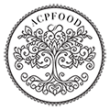
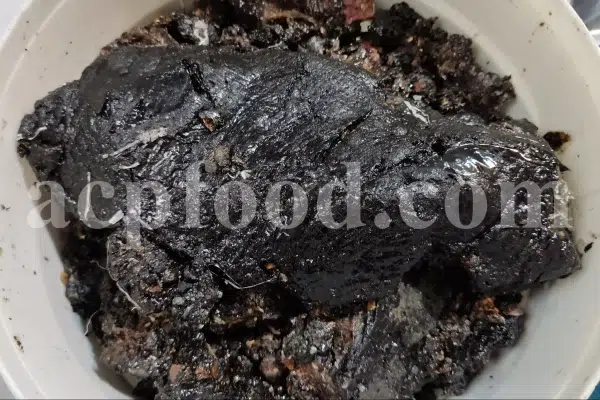

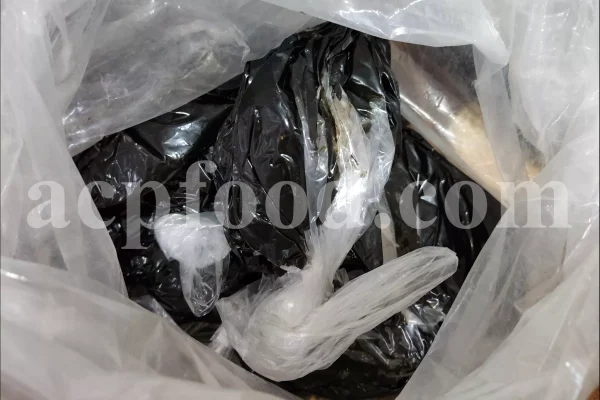
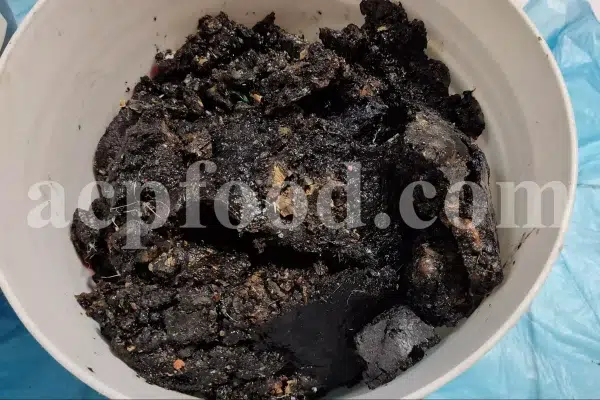
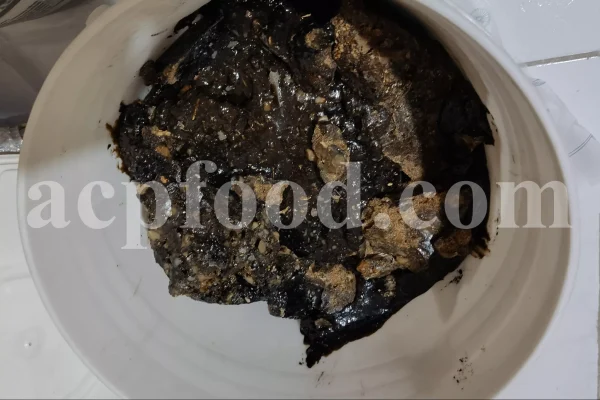
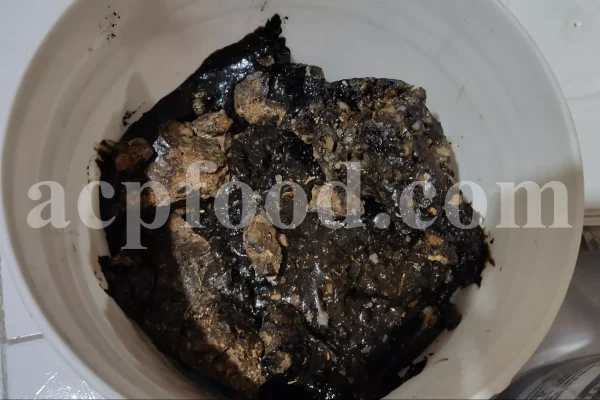
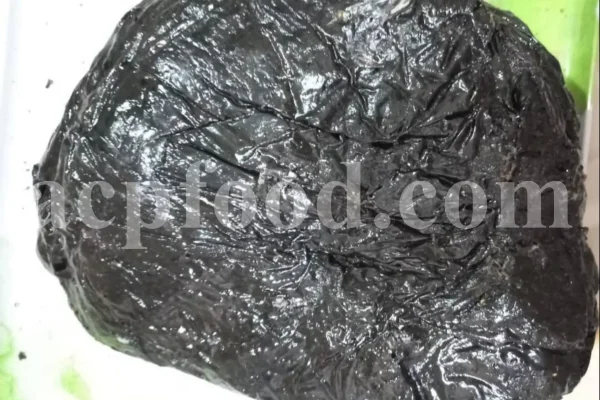
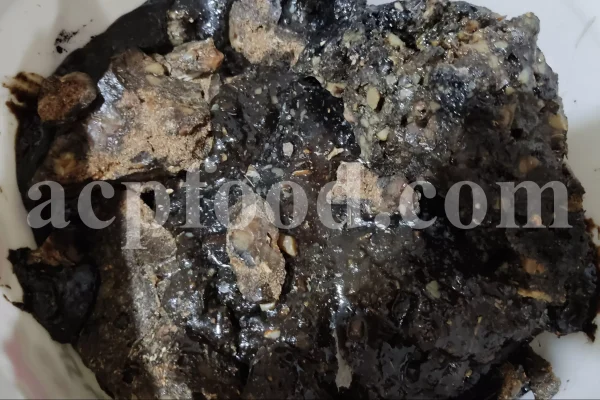


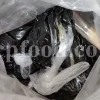
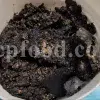
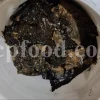
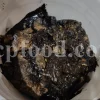
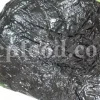
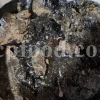





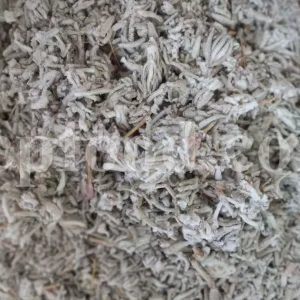

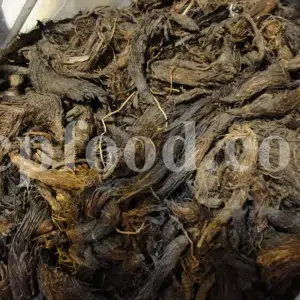
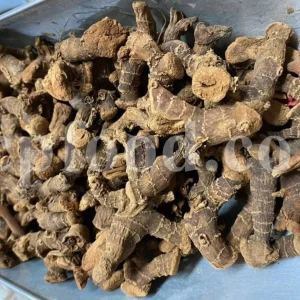
Reviews
There are no reviews yet.